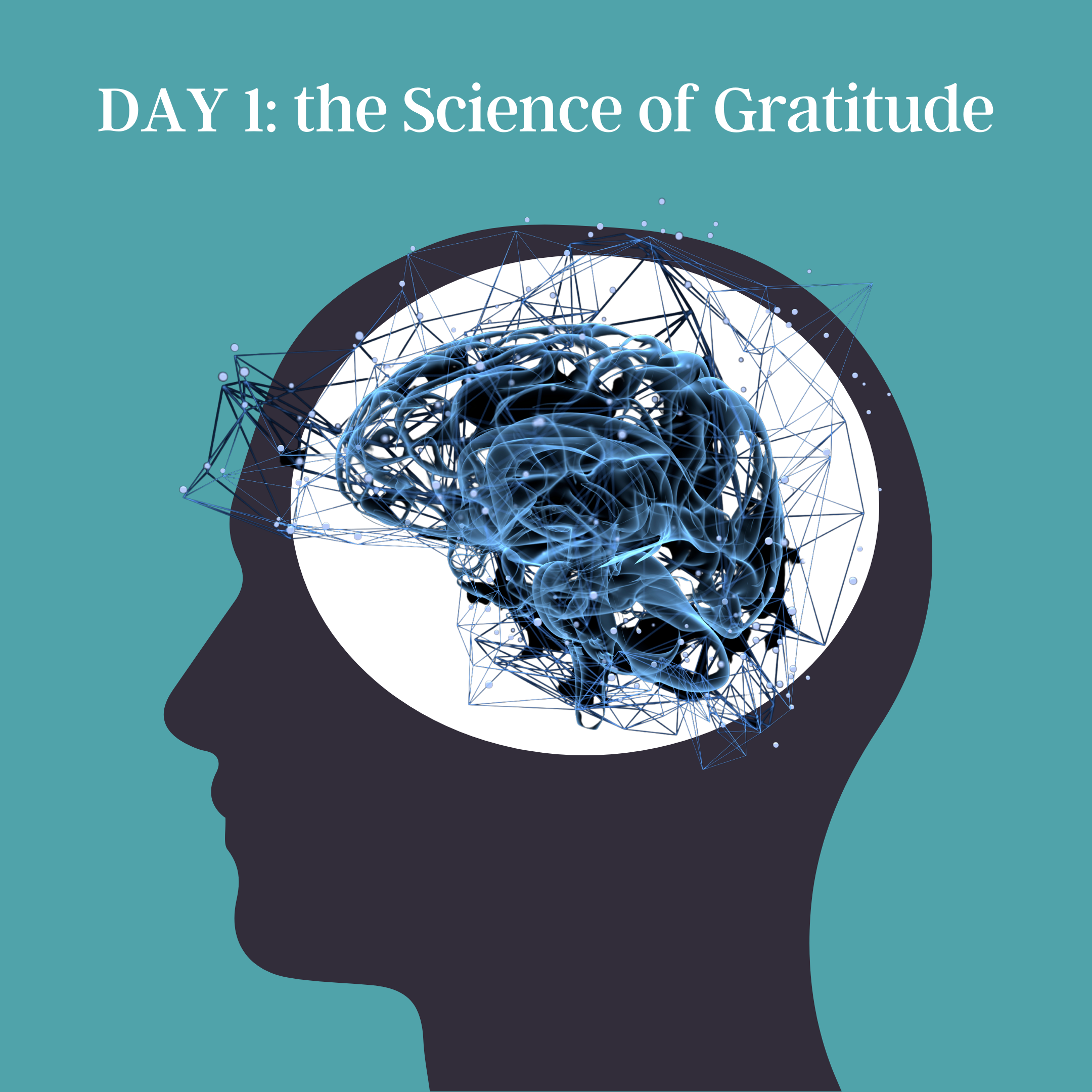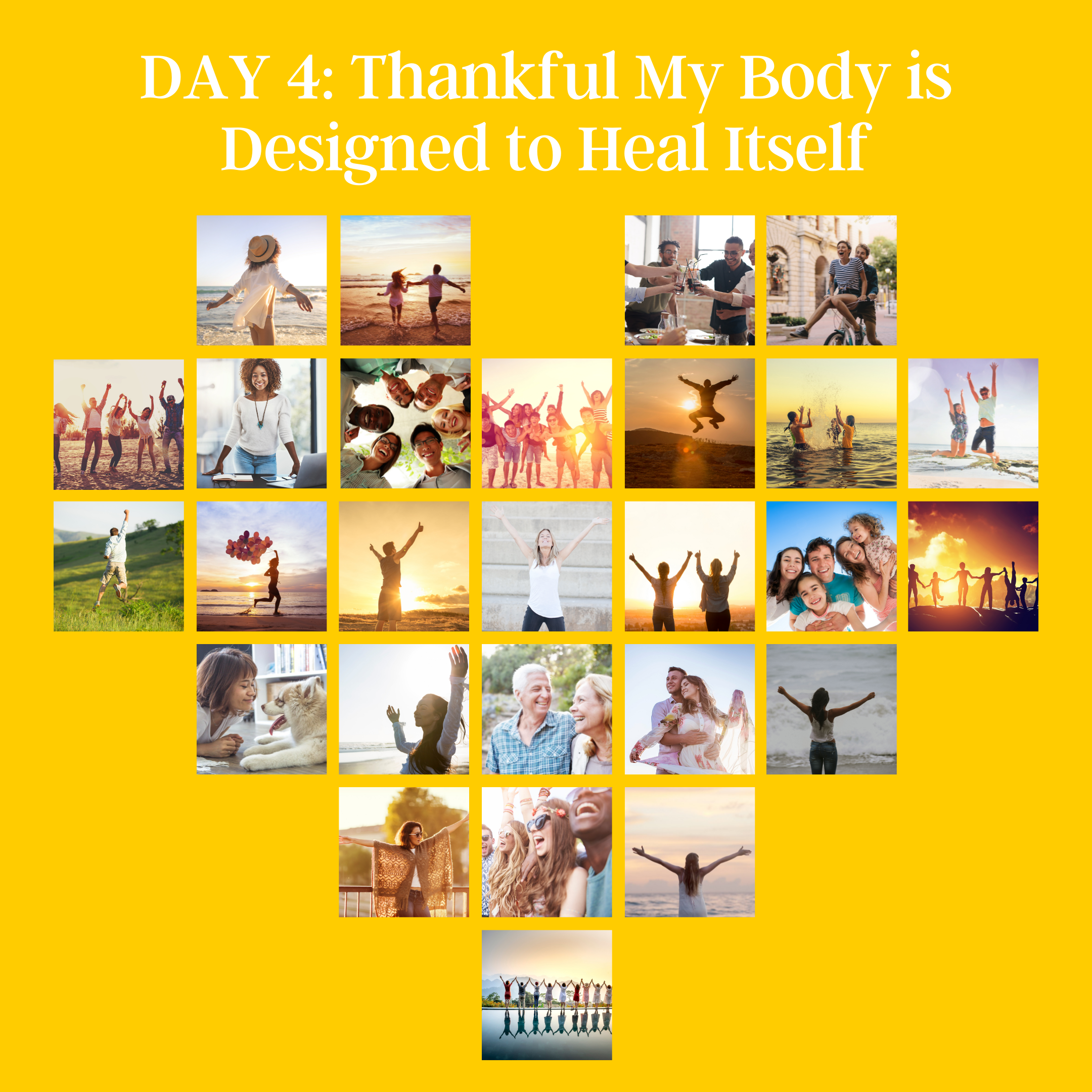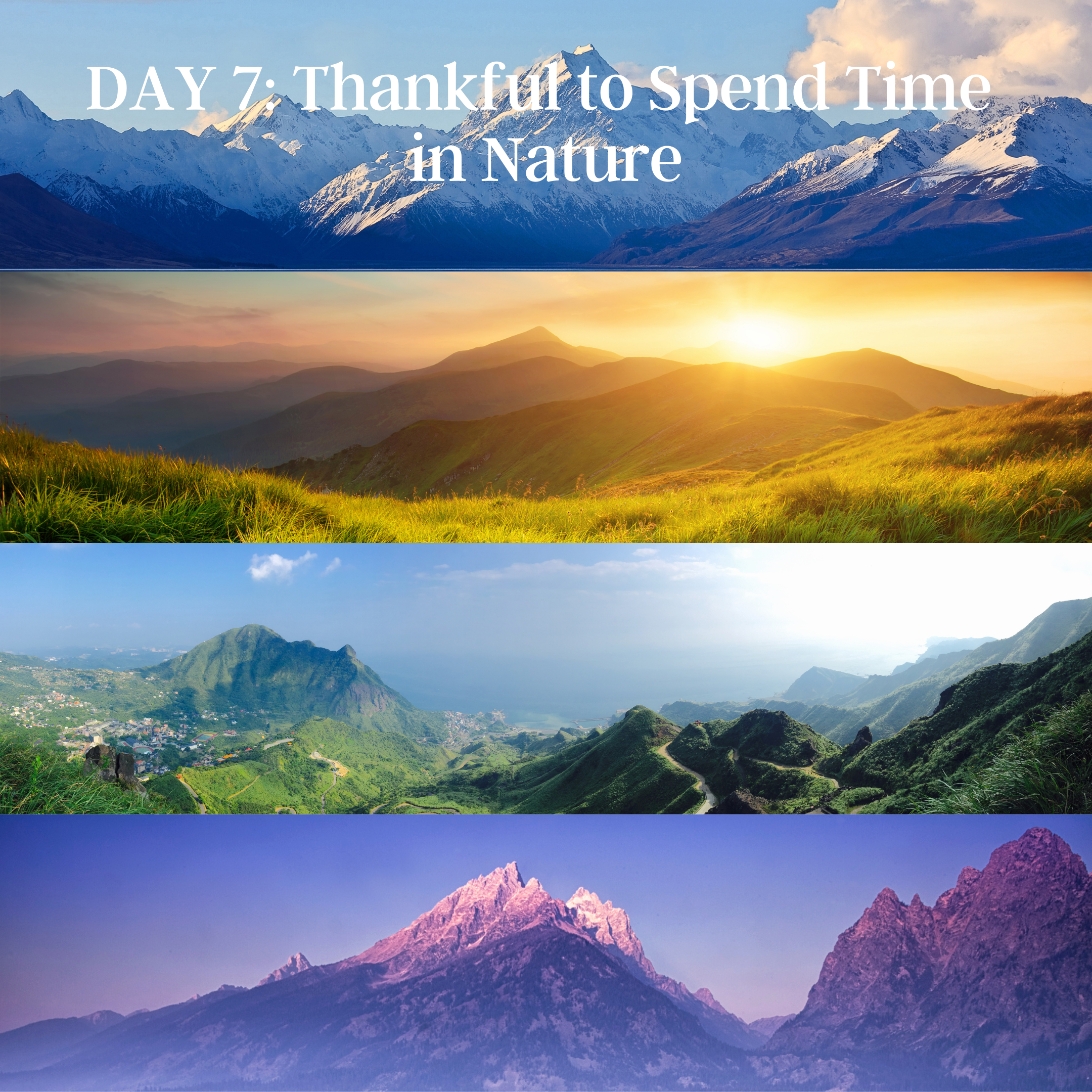
The Power of Positivity
Physical Therapy is about restorative care and harnessing the body’s ability to heal itself.
Research shows that expressing gratitude builds a positive mindset,
which has tremendous healing power and influence over your body at the cellular level.
During the ‘7 Days of PT’ we will be exploring the powerful affect Practicing Thankfulness has on our lives and the direct, positive impact it can have on your rehabilitation and health.
Day 1: The Science of Gratitude

When we express and receive gratitude, our brain releases dopamine and serotonin, the two crucial neurotransmitters responsible for our emotions. They are the ‘feel good’ chemicals in our brain. They enhance our mood instantaneously and make us feel happy.
Not only does expressing gratitude make us feel good, it also reduces fear and anxiety by regulating the stress hormones.
By consciously practicing gratitude everyday, we can encourage our brain to build “thankful” neural pathways. The more we are thankful, our brain will strengthen these connections and ultimately create a permanent grateful and positive nature within ourselves.
Grateful people experience more positive emotions, have greater life satisfaction, and are more hopeful about the future.
Highly grateful people are more empathetic, forgiving, and supportive, and less likely to be depressed, anxious, and jealous.
There are so many benefits to incorporating PT, Practicing Thankfulness, into your daily life.
Day 2: Belief and Positive Thinking

Your core values and beliefs affect how you look at every situation and face every circumstance. What you believe drives your thoughts and your thoughts affect and determine your choices and actions.
Your thought life can also influence the quality of your personal relationships and how you view the world at large.
Positive thinking is an emotional and mental attitude that focuses on the good and expects results that will benefit you. It’s about anticipating happiness, health and success instead of expecting the worst.
Leveraging the law of attraction is a mindset that creates a positive feedback loop, bringing even more good into your life.
When you express gratitude, the posture of your belief is that you are blessed and your thoughts are on thankfulness. This affects how successful you feel in your rehabilitation, your relationships, career, and in general life satisfaction.
Day 3: Gratitude Reduces Pain

Gratitude impacts our mental and physical well-being. Positive psychology and mental health researchers in the past few decades have established an overwhelming connection between gratitude and good health. Keeping a gratitude journal causes less stress, improves the quality of sleep, and builds emotional awareness (Seligman, Steen, Park, & Peterson, 2005).
Gratitude is positively correlated to more vitality, energy, and enthusiasm to work harder.
Gratitude has also been studied for its positive effects on how we experience pain sensations. A thankful mindset actually decreases sensitivity to pain and improves pain tolerance. Counting Blessings vs Burdens (Emmons & McCullough, 2003), features a study conducted on evaluating the effect of gratitude on physical well-being, The research indicates that 16% of the patients studied who kept a gratitude journal reported reduced pain symptoms and were more willing to work out and cooperate with the treatment procedure. When the brain releases serotonin and dopamine, we experience greater vitality, thereby reducing subjective feelings of pain.
Day 4: Thankful My Body is Designed to Heal Itself

Your body is an incredible self-healing organism. There are 30-40 trillion cells in the human body, and every second that we’re alive, these cells work tirelessly to achieve equilibrium, keeping us at—or bringing us back to—a natural balance. Despite injury or illness, our cells have the ability to heal and replace themselves, all to keep the body functioning at optimal levels. When given the right support and environment, your body will work to restore homeostasis.
You can assist the body’s healing process by:
-eating a healthy, whole food diet
-getting regular exercise
-practicing good sleep hygiene
-reducing stress
-making time for laughter, fun, creativity, and play
-maintaining a positive mindset
Day 5: Gratitude for Small Improvements

Just as there are developmental stages in all of life, there are phases to wound healing and recovery. Our body experiences hemostasis (injury/wound) then progresses through inflammation, proliferation, and finally to the remodeling stage.
Whether we are recovering from an injury, surgery, or any other process, we can express gratitude for the incremental improvements we see over time. There is confidence to be found in trusting the natural process of healing, no matter what the pace.
As the old adage goes, “Time heals all wounds.”
Day 6: Thankful for My 5 Senses

Every day our body performs the incredible work of sensing our environment around us. We take in constant stimuli and process it multiple ways.
As you are on your healing journey, you can be grateful for all the ways your body allows you to function in the world. We are highly sensitive beings.
The taste of ice cream, the sound of a symphony, the touch of a child’s hand, the sight of a sunset, the smell of fresh roses.
There are so many ways to feel and know we are alive. As we become aware of all we are sensing, we can be grateful for how wonderful we feel.
Day 7: Thankful to Spend Time in Nature

Research shows that people who spend a minimum of two hours a week in green spaces — local parks or other natural environments, either all at once or spaced over several visits — are substantially more likely to report good health and psychological well-being.
Ecopsychology strives to understand and harmonize people’s relationship with the Earth.
Studies have shown that time in nature is an antidote for stress: It can lower blood pressure and stress hormone levels, reduce nervous system arousal, enhance immune system function, increase self-esteem, reduce anxiety, and improve mood. Distraction and aggression lessen in natural environments, which also helps speed the rate of healing.
The growing body of research — combined with an intuitive understanding that nature is vital and increased concerns about the exploding use of smartphones and other forms of technology — has led to a tipping point at which health experts, researchers, and even government officials are now proposing widespread changes aimed at bringing nature into people’s everyday lives.
